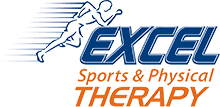Do you have frequent or continuous jaw pain? Do you find chewing or talking harder to do comfortably? If you answered yes to these questions, you might have a condition called temporomandibular joint (TMJ) dysfunction.
TMJ dysfunction is often the result of weak or tight muscles in your jaw or neck. This condition is more common than many people might think; it’s estimated that up to 12% of the U.S. population has TMJ dysfunction.
One option that can help you treat TMJ dysfunction is physical therapy. Therapy specialists can help you find ways to target the underlying muscle issues that can lead to TMJ dysfunction, and they can also help you reduce the jaw pain and other symptoms of this issue. Often, these goals are achieved using TMJ physical therapy exercises like these:
- Jaw hold exercise
The jaw hold is a common TMJ treatment exercise used in physical therapy plans. It’s intended to strengthen the muscles that support and move your jaw, and this exercise can also help realign the jaw joint. As a result, doing the jaw hold regularly can help reduce the pain of TMJ dysfunction.
Steps for performing the jaw hold exercise
- Get into the starting position for this exercise by closing your jaw and placing the tip of your tongue on the roof of your mouth just behind your front teeth. Also, you should be sitting or standing with good head and neck posture.
- Place your thumbs against the bottom of your jaw.
- Push against your thumbs with your jaw like you’re trying to open it. Apply just enough pressure with your thumbs to keep your jaw from opening.
- Maintain this state for five to 10 seconds and then relax.
- Repeat these steps until you’ve completed the exercise five times.
- Chin tucks
It can surprise some people when they find out how closely the neck and jaw are connected. In fact, a major issue that can lead to TMJ dysfunction is poor head and neck posture, and physical therapy specialists often seek to counteract poor posture with exercises. One exercise that can help improve posture and treat TMJ symptoms is the chin tuck.
Steps for performing chin tucks
- To begin this exercise, stand or sit with the neck and head in good posture.
- Slowly pull your head straight backward until it looks like you have a double chin.
- Hold this position for 10 seconds.
- Slowly let your head return to the starting position.
- Repeat these steps until you’ve done the exercise two or three times.
Excel PT offers exercises and other physical therapy methods for TMJ dysfunction
Want to find out more about exercises and other physical therapy methods that can help your TMJ dysfunction? Our Excel Sports & Physical Therapy team is here to help you learn everything you want to know about the treatment options we offer. Our physical therapists can answer such questions as part of your comprehensive evaluation. Then, we can build you a personalized therapy plan designed to treat and prevent your symptoms using therapy methods like:
- Therapeutic exercises
- Joint mobilization
- Soft tissue mobilization
- Astym® therapy
- Dry needling
- At-home care
- Virtual therapy
Contact our team today for more information about how we can help treat your TMJ dysfunction or to schedule your initial appointment.






